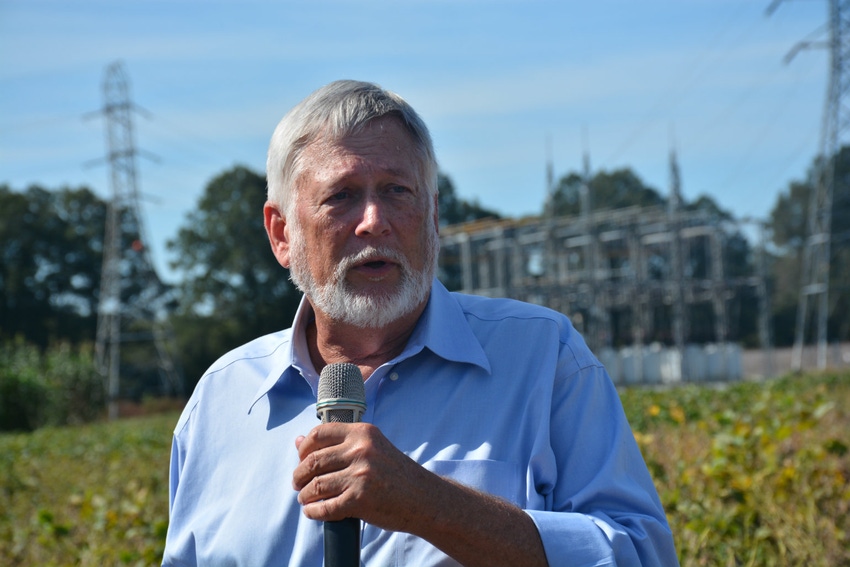
Many of the soybeans grown in the South prior to the late 1990s were public varieties developed by USDA’s Agricultural Research Service in Raleigh, N.C.
In the 1970s and 1980s, such USDA varieties as Pickett, Centennial, Forrest, Young and Ransom were among the most popular soybean lines grown in the South. The varieties were all bred and developed by ARS breeders in Raleigh and other locations across the country.
That all changed when Roundup herbicide and genetically modified soybeans were paired together in the late 1990s.
“With the advent of Roundup, we were evaluating whether or not we should continue to do soybean breeding. Was there a need for public plant breeding anymore?” says Dr. Tommy Carter, research leader and research geneticist with USDA-ARS in Raleigh.
Speaking at the Piedmont Soybean Field Day at the Piedmont Research Station in Salisbury, N.C., Carter said USDA worked with breeders from the private companies who all said they still needed the breeding work of USDA scientists.
Companies such as Monsanto, Syngenta and Pioneer each do about 1 million plots of soybean varietal development each year, which USDA could never do. But Carter says ARS does provide much needed novel breeding stock for private as well as public breeders.
The USDA soybean breeder explains that China is the ancestral home of soybeans, and there are literally 10,000 types of soybeans grown in that country which aren’t grown in the United States. USDA-ARS breeders take these soybeans from China, other parts of Asia and other places in the world, bring them to Raleigh and test how they perform in North Carolina. Top performing material is crossed into the USDA breeding program to develop parental stocks which companies can use.
Carter notes that the soybean material from the USDA Crop Germplasm Collection is the premier source of new crop genes used by plant breeders to fight nematodes, improve nutritional value and increase crop productivity. The key, Carter says, is to develop traits farmers and industry need.
For example, USDA researchers in Raleigh are now working on increasing the protein levels in soybeans as industry is now demanding higher protein. Carter notes that as soybean yields have gone up, protein levels have gone down.
Carter said private industry isn’t doing a lot of protein work because farmers aren’t yet paid for protein levels in their soybeans, but USDA is doing the basic ground sleuthing to turn out protein traits that will be useful to farmers once they do get paid for protein.
In addition, Carter and his USDA colleagues in Raleigh are examining drought-tolerant traits at the Sandhills Research Station in Jackson Springs, N.C., and flood-tolerant traits at the Tidewater Experiment Station in Plymouth, N.C.
“We’re also trying to raise the yield ceiling of soybeans. We’re bringing in the exotic material from Asia and screening out the bad traits. We’re pulling in the yield genes and we are raising the yield level of our material and handing that off to the companies as breeding stock,” he said. Of course, anyone who wants to grow a non-genetically modified bean can grow our soybean releases directly for commercial use.
About the Author(s)
You May Also Like






